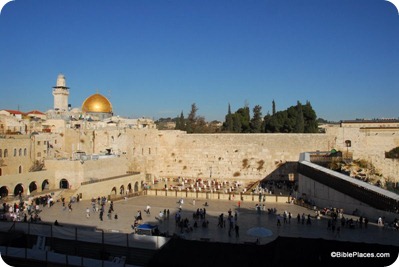Approval of massive renovations at the Western Wall prayer plaza bodes ill for any who like a place for quiet reflection. On the other hand, the changes will better accommodate the increasing crowds visiting the site. From the Jerusalem Post:
A new plan to completely renovate the Western Wall Plaza was approved by the Jerusalem Local Planning and Building Committee on Monday, paving the way for the most drastic changes to the layout of the area since the plaza was created after the Six Day War.
“The goal of expanding the entrances and exits of the Western Wall plaza and will give us a solution for allowing large numbers of worshipers and visitors to enter at once, as well as emergency exits,” Rabbi Shmuel Rabinovitch, the chief rabbi of the Western Wall, told The Jerusalem Post.
[…]
The new plan, which is still in the very initial stages of approval, calls for a large underground plaza to replace the current main entrance, located at Dung Gate. A new visitor’s center will replace the current police building, with areas for educational programming, additional bathrooms, an auditorium, lecture halls, and an exhibition space for the archeological discoveries in the area.
The full article is here. Other stories about the decision can be found here.
